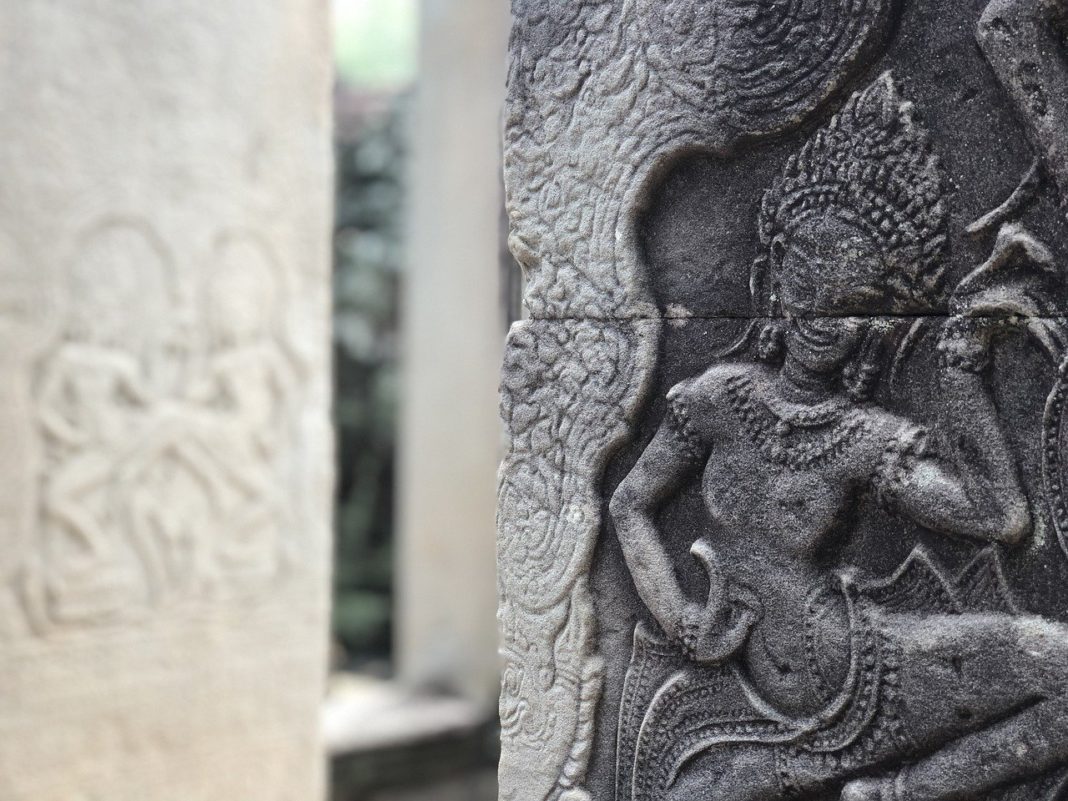The Sacred Dancers of Angkor is the first and only spiritual dance troupe in Cambodia that revives rare classical and folk repertoires and specializes in sacred dance rituals to respect and re-sanctify the holy sites of the temples. Each artist of the troupe was born, raised and trained near Banteay Srei, in the heart of the Khmer cultural heritage site of Angkor.
By virtue and dedication, these rural children, who have become real artists over their years of intense training, have naturally come to embody the spirituality, history and legacy of their ancestors.
The Sacred Dancers of Angkor perform twice a week, on Wednesdays and Sundays at the Divine Sala.
The barefoot young dancers are dressed simply in elegant silk cotton costumes with coconut flowers adorning their wrists and ankles, their faces are scrubbed clean and tidy hair topped by crowns, hand-woven from natural fibers by the artists.
There is none of the heavy make-up and elaborate hairstyling worn by the Apsara dancers who perform nightly in tourist shows in dozens of hotels and restaurants across Siem Reap. Nor is there a buffet dinner, the chatter of distracted tour groups, or the clinking of glasses and cutlery on plates that accompany most of the apsara shows.
Instead, the small attentive audience of 20 or so people get to focus on the precise, graceful movements of the serenely smiling dancers, and listen to the tinkling of the Cambodian xylophones played by the musicians seated on the floor, in almost reverential silence as they might at a ballet, opera or theatre.
Ravynn Karet-Coxen is the founder of the Siem Reap-based Nginn Karet Foundation, the Sacred Dancers of Angkor, and the Conservatoire Preah Ream Bopha Devi dance school in Banteay Srei where the dancers study. Ravynn Karet-Coxen believes this is the way that classical Khmer dance, or Cambodian ballet, or ‘apsara dancing’ as it’s commonly called, should be performed, because the Apsaras weren’t mere dancers, but were divinities, celestial beings, and messengers to the gods.
The students, aged between nine and 18 years old, undertake compulsory training in classical and folk repertoires, traditional music, weekly art classes to learn to draw and paint, and English lessons. In addition, 66 of the performers were ordained as monks and nuns for ten days in order to better understand spirituality and Buddhism.
According to diethelmtravel.com and grantourismotravels.com












